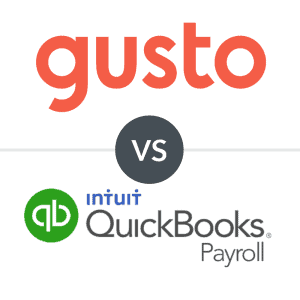An annual bonus for your employees can improve employee satisfaction, motivation, and productivity.
Our content reflects the editorial opinions of our experts. While our site makes money through
referral partnerships, we only partner with companies that meet our standards for quality, as outlined in our independent
rating and scoring system.

Year-end bonuses are given out to employees as a reward for their contributions to the business throughout the year. While year-end bonuses are another expense for your business, there are numerous benefits to rewarding your employees with bonuses, including boosting morale and improving staff retention.
This guide takes a deep dive into year-end bonuses, including their benefits, the different types of bonuses, how to calculate bonuses, and more. Let’s get started!
What Is A Year-End Bonus?
A year-end bonus is a form of compensation or benefit earned by employees as a reward for their work throughout the year and is usually between 5%-10% of an employee’s annual wages. Bonuses may be monetary or come in other forms, such as additional PTO days or paid gym memberships.
Year-end bonuses may also be referred to as Christmas or annual bonuses. They differ from traditional bonuses because they are only given out at the end of the year or sometime during the year’s final quarter.
As a form of supplementary income, monetary bonuses are taxed at a different rate than regular wages. Year-end bonuses may also be counted as a tax-deductible business expense.
The Benefits Of Offering Year-End Bonuses To Employees
From increased productivity to reduced staff turnover rates, year-end bonuses benefit both employees and employers alike. Before considering the benefits of year-end bonuses, employers need to consider the additional cost and whether it’s worth incurring.
If you’re on the fence, here are the benefits of year-end bonuses you should consider:
- Increased Motivation & Productivity: Just as minimum wage increases lead to improved employee productivity, increasing an employee’s base wage through a year-end bonus is likely to yield the same results.
- Boosts Employee Morale: Offering a year-end bonus is just one way to show employees that their hard work matters and is essential to the success of your business. A little appreciation goes a long way.
- Improved Staff Retention: Employees who feel appreciated and fairly compensated are less likely to jump ship for one of your competitors with a less competitive benefits package.
- Attract Employees: Besides helping your business keep employees, bonuses can help attract employees during the recruitment process. Bonuses are one of the top employee benefits your business can offer.
Types Of Year-End Bonuses
There are several types of year-end bonuses. Some are based on the performance of your employees and others are based on the performance of your business. Some bonuses aren’t tied to performance at all.
Learn more about the types of year-end bonuses to determine which makes the most sense for your business.
Cash Profit Sharing
Pros
- Makes employees truly feel like part of the team
- Can help boost performance throughout the year
Cons
- May cause resentment if bonuses are low or if no bonuses are given at all
Cash profit sharing (an annual bonus) is based on the company’s performance. These bonuses are typically given at the end of the year, and the amount is based on the company’s profitability.
For example, higher bonuses are given on more profitable years, while lower bonuses (or no bonuses) are given if the business had a tough year financially.
Holiday Bonuses
Pros
- Can help alleviate financial burdens on employees during the holidays
- Can increase motivation and boost morale
Cons
- May cause issues with performance if bonuses are lower or not given in the future
As the name suggests, holiday bonuses are given before the winter holidays. This type of bonus is typically used to show appreciation for the hard work that employees have performed throughout the year.
For many employees, this is a welcome token of appreciation, as a year-end bonus can help offset costs associated with the holidays.
Holiday bonuses are typically the same amount for all employees. For example, in 2020, Amazon offered holiday bonuses of $300 to full-time employees and $150 to part-time employees. However, some employers may opt for different bonus structures based on a number of factors, such as salary or work performance.
Performance Bonuses
Pros
- Can boost morale
- Can motivate employees to work harder or meet specific goals
Cons
- May promote unhealthy competition among employees
- Could cause resentment for employees who received no/low bonuses
A performance bonus (or merit-based bonus) is compensation outside of an employee’s typical pay in recognition of exceptional performance in the workplace. Typically, this type of bonus is awarded when a company goal or target has been met.
An employee may receive a bonus based on their own merits, whether that’s going above and beyond to serve customers, racking up sales, working well within a team, or bringing a big project to the finish line.
Typically, an annual performance review is performed to determine whether an employee receives a bonus and the amount of the bonus. Performance bonuses may be a regular company-wide initiative or offered to departments for specific goals, targets, or projects.
Non-Monetary Bonuses
Pros
- Can be more meaningful and personalized
- May be less expensive than giving out cash bonuses
Cons
- May require more time and planning
- The wrong gift can hurt morale and performance
Often, we think of bonuses as being monetary. However, there may be instances where a non-monetary bonus may be more appropriate. Whether your business is on a strict budget or you want to combine monetary rewards with unique non-monetary gifts, there are plenty of bonus opportunities that are outside of the box but still appreciated by employees.
Non-monetary bonuses include:
- Gift cards, gift baskets, or other gifts
- Company swag
- Additional time off
- Benefits such as free meals or gym memberships
- Trips, company retreats, or team-building activities
How To Calculate Year-End Bonuses
To calculate year-end bonuses, you’ll need to decide what type of bonus you’ll be giving to your employees. Once you’ve chosen your bonus structure, use the following tips to easily and accurately calculate your bonuses.
Depending on which type of bonus you offer, the best payroll software can automatically calculate bonuses and make off-cycle payroll runs. Otherwise, you can calculate year-end bonuses manually.
Performance-Based Annual Bonus
If you decide to give employees performance-based bonuses based on sales, you’ll need to have sales figures for each employee. There are two ways that you can calculate bonuses based on sales.
- Percentage Of Sales: One option for year-end bonuses is to give employees a set percentage of their sales. If you decide to give your employees 10%, simply multiply 0.10 by the employee’s annual sales. An employee who made $10,000 in sales for the year would receive a bonus of $1,000 ($10,000 x .01), while an employee who made $5,000 in sales would receive a $500 bonus ($5,000 x .01).
- Number Of Sales: Another option is to give a flat rate for each sale made by an employee. For instance, let’s say that you decide to give an employee $25 for each sale made throughout the year. Simply multiply $25 by the number of sales made. An employee who made ten sales would receive a $250 bonus ($25 x 10), while an employee who made 40 sales would receive $1,000 ($25 x 40).
Bonuses For Teams Or Departments
Calculating each bonus is easy if you set a goal for a team or department and will be giving an equal bonus to each team member. Simply divide the bonus amount by the number of team members.
Let’s say you give a team a $10,000 bonus after completing a project. Ten team members worked on the project. In this example, each team member would receive a bonus of $1,000 ($10,000 / 10).
Non-performance-Based Bonuses
If you decide to give a non-performance-based bonus, there are a few ways to go about doing this. Two of the most common include:
- Equal For All Employees: No calculations are involved in this bonus structure. Instead, look at your budget and determine a flat bonus rate for every employee (e.g., giving each employee a $500 holiday bonus).
- Percentage Of Salary: Another structure for non-performance-based bonuses is giving each employee a percentage of their salary. For this example, let’s consider a 5% year-end bonus and multiply an employee’s salary by .05. An employee who makes $40,000 per year would receive a bonus of $2,000 ($40,000 x .05).
How To Calculate Bonus Pay Taxes
Any wages paid to an employee that aren’t regular wages are categorized as supplemental wages. Year-end bonuses are considered supplemental wages and are subject to payroll taxes, including Social Security, Medicare, and FUTA taxes. There are a few different ways to calculate bonus taxes.
Annual Bonus Combined With Regular Wages
If the bonus is paid along with regular wages as a single payment and an amount is not specified for each, federal taxes can be withheld at the normal tax rate when you run payroll.
Annual Bonus Paid Separately From Regular Wages
If you choose to pay your bonuses separately, there are different methods for calculating how much tax to withhold. If you have withheld income tax from the employee during the current year or the previous year, you can opt to use one of two methods:
- Flat Rate: A flat rate of 22% can be withheld from the employee’s paycheck OR
- Calculate As A Single Payment: With this method, you’ll determine the amount to withhold by using the employee’s base salary and the bonus payment as if you were making a single payment.
Only the second method can be used if you have not previously withheld income tax from your employee.
Learn more about withholding income tax from bonuses by checking out IRS Publication 15.
When Should You Send Out End-Of-Year Bonuses By?
Year-end bonuses should be sent out by the end of the current year or before the end of the first quarter of the following tax year. The timing of sending out year-end bonuses varies by a few factors, including the type of bonus and why the bonus is being given.
- Performance-Based Bonuses: This bonus should be disbursed following a performance review, at the end of a project, or when targets are met. This could be at the end of the year or at the beginning of the new year.
- Holiday Bonuses: These should be disbursed around the end of November or the beginning of December. Your employees will appreciate receiving these bonuses in time to purchase holiday gifts or pay other expenses.
- Multiple Bonuses: It’s important to provide adequate space between the bonuses, so there is no confusion. For example, distribute holiday bonuses in late November or early December, while annual bonuses can be distributed in early January.
The Bottom Line: Should I Offer A Year-End Bonus?
Rewarding employees through a year-end bonus will benefit both your employees and your business.
However, if you decide to offer year-end bonuses, you’ll need to ensure that your business can afford the additional expense. It’s best to build bonuses into your business’s payroll budget at the year’s start rather than trying to fit them in at year’s end.
Need more help fitting bonuses into your business’s budget? Check out our resources on business budgeting and year-end payroll:
Year-End Bonus FAQs
What is the average year-end bonus?
The average year-end bonus varies by a number of factors, including what type of bonus is being given, the number of employees, and the company’s profitability. A general estimate for an end-of-year bonus is between 5% to 10% of an employee’s annual salary.
What is the best way to structure year-end bonuses?
The best way to structure year-end bonuses depends on several factors, such as your industry, the number of employees, and how your business is performing.
For example, a business that relies primarily on sales may find rewarding employees with a bonus based on a percentage of their personal sales is the best structure. A smaller business may find that offering benefits and non-monetary bonuses may be the most strategic financial move.













